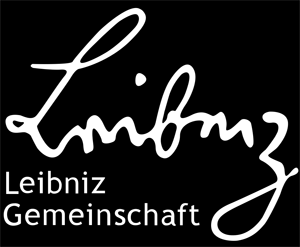This question has been a source of controversy for years. Researchers led by Prof. Adam Lange from the Leibniz- Forschungsinstitut für Molekulare Pharmakologie (FMP) in Berlin have now been able to show that water molecules do not co-migrate through the potassium channel. Since the experiments were carried out on cell membranes under natural conditions for the first time, the researchers have strong proof in their hands. Their work has just been published in the journal "Science Advances".
Our cells need potassium ions, for example to transmit nerve impulses or to control the heart rate. This is why virtually every human cell – or to be more precise, the membrane of a cell – is equipped with potassium channels. Because potassium channels are of fundamental importance for biological processes, and even the most minute changes can result in serious diseases, the tiny protein molecules are the focus of research efforts around the world. Indeed, in 2003, a US researcher was awarded the Nobel Prize in Chemistry for his elucidation of the structure of potassium channels.
Controversial debate on two different mechanisms
However, the question of how potassium actually passes through the channel in order to cross the cell membrane, still remained unclear. For a long time, it was assumed that each potassium ion was followed by a water molecule and that the elements then lined up, like links in a chain, and passed through the narrowest part of the potassium channel, the so-called selectivity filter, one after the other. This was based on the fact that potassium ions are positively charged and would repel each other without the intermediate water molecules. However, this mechanism was questioned in 2014 by Göttingen researchers led by Prof. Bert de Groot: Computer simulations showed that there are no water molecules in the selectivity filter of potassium channels. However, this did not end the debate. Subsequently, additional studies were published that seemed to support the older mechanism and apparently disproved the new one.
Now researchers from the FMP in Berlin have brought clarity into the controversial debate: Dr. Carl Öster and Kitty Hendriks of Prof. Adam Lange's research group and other colleagues at the FMP were able to show for the first time by means of solid-state nuclear magnetic resonance (NMR) spectroscopy that potassium ions actually do migrate through the potassium channels without water molecules in between. Their findings show that the potassium ions are positioned directly behind each other and push each other through the potassium channel, from bottom to top.
Under natural conditions the selectivity filter of potassium channels is free of water
"The technology we used enables us to look at membrane proteins in real cell membranes under natural conditions, for example at room temperature or physiological salt concentrations," explains Kitty Hendriks. "Thus we have been able to show that under these conditions there is definitely no water between the potassium ions in the selectivity filter."
The first indications of this came from computer simulations and there is also X-ray crystallographic data suggesting the absence of water molecules in the selectivity filter of potassium channels. "However, these investigations were conducted under artificial conditions," emphasizes Dr. Carl Öster. "With our supplementary data obtained through NMR spectroscopy, we now have a heavyweight argument in hand that the newer mechanism is the right one."
The FMP researchers and their colleagues from the Max Planck Institute for Biophysical Chemistry led by Prof. Bert de Groot, whose computer-aided molecular dynamics simulations were also incorporated into the study, have demonstrated that there are no water molecules between the potassium ions.
Progress for research
An important factor in elucidating the mechanism was the fact that the FMP is one of the world's leading centers for NMR spectroscopic investigations and is involved in ongoing further development of this complex technology. "Five years ago, we certainly would not have been able to demonstrate this in such a manner, but now we have reached a point where we are able to effectively answer this important question," said Prof. Adam Lange, head of the research group that focuses on the investigation of membrane proteins, such as ion channels. He adds: "Since the processes in potassium channels are fundamental to our health, our results have great significance that also extends beyond basic research."
The work was financially supported by the European Research Council as part of an ERC grant to Prof. Lange and by the German Research Foundation (DFG; Research Group 2518).
Publication
Carl Öster*, Kitty Hendriks*, Wojciech Kopec, Veniamin Chevelkov, Chaowei Shi, Dagmar Michl, Sascha Lange, Han Sun, Bert L. de Groot, Adam Lange. The conduction pathway of potassium channels is water free under physiological conditions, Science Advances 31 July, 2019, DOI: 10.1126/sciadv.aaw6756
![[Translate to English:] [Translate to English:]](/fileadmin/_processed_/9/8/csm_Adam_final_20190808_high_res_3e760a4395.jpg)
